After finding out that I was pregnant, I was incredibly nervous that my dietary restrictions would become a big problem throughout my pregnancy, both for my baby and for myself. At my first prenatal appointment, I spoke with a nutritionist in the office and she went over some basic diet dos and don’ts but really didn’t help with the specifics within a gluten free diet. As I drove home I probably talked my husband’s ear off with all of my questions for the months to come, including: What do I eat to help with nausea since I can’t use the go to saltine crackers? What am I going to do when I have cravings for non-gluten free food? Will I have enough to eat and gain enough wait? Will my baby develop well without gluten? Is my gluten intolerance going to be genetic or by not consuming gluten while pregnant will my baby automatically have an intolerance to gluten? Like I said, I had a ton of questions!
What I learned quickly was what you find online or at the doctor’s office is an abundance of basic pregnancy dietary plans which are a great place to start but do not necessarily ease the fears of a pregnant woman with a dietary challenge. From everything that I had read, from a developmental perspective gluten or wheat, although important in the group of grains, are not alone in this group leaving a couple of other options to fulfill this dietary requirement. My other concerns like my baby’s sensitivity to gluten after birth was unfortunately left open ended until the time would come to actually introduce it into her diet, but that’s another discussion later on.
Where To Begin:
With tons of diet questions swarming around inside of my head and my pregnancy slowly progressing, I desperately turned to the internet for guidance, but not without my OB steering me in the right direction first. My Ob/Gyn’s office has a website, as I’m sure many of yours do, where they provide information and answer questions on anything and everything having to do with women’s health. This website proved to be so helpful to me during my pregnancy not just for diet information but also for answers to questions about stages during pregnancy, safe medications, and labor and delivery.
From a diet side of things, OB’s website led me to the United States Department of Agriculture’s (USDA) Choose My Plate program. This program offers the ability to develop a customized pregnancy, as well as breastfeeding, daily food plan using their SuperTracker feature that plans out each trimester based on your specific height, pre-pregnancy weight, due date, and activity level. The downside with Choose My Plate’s SuperTracker is of course that it doesn’t customize to a gluten free diet. However, this gives you a place to start, to note how much of certain foods you should eat and what kinds of foods are packed full of those nutrients and are great during pregnancy, and then afterwards tweak here and there to accommodate a gluten free diet.
So just as we learned years ago from the trusty food pyramid, and is now stated similarly on the USDA site, pregnant or not, we all should follow the five main food groups of vegetables, fruits, dairy, protein, and grains. The only part that really differs between a pregnant and not pregnant daily diet plan is the total caloric intake per day. As you go through pregnancy and the demands of your growing baby are growing too you need to also bump up the total number of calories that you consume each day, not only to benefit your little one but also you too.
Just as an example, for a pregnant woman of average height and moderate activity level, the USDA SuperTracker, which you can access by clicking on the text Daily Food Plan colored in blue, of the Choose My Plate program creates a custom daily food plan that suggests that you start your first trimester out with 2000 calories per day, which is the same as your normal daily requirement. Then, as we work our way towards the second trimester, your caloric intake goes up to 2200 and then finally, in your third trimester, it’s recommended that you consume 2400 calories. Mind you, this varies for each individual depending on where they start before pregnancy, so make sure you take advantage of this tool to track where your pregnancy diet should lie.
Pregnancy Diet Breakdown:
How does your daily calorie intake during pregnancy breakdown between the main food groups? Well basically, the breakdown of a pregnancy diet is the same to that of your normal, healthy everyday food plan, the only difference being the types of foods that you can consume or should consume as well as the amount of them. What’s really important now that you’re expecting, is that you need to consume foods from each of the five main food groups, and carefully too since you are pregnant and have limitations on what you can and want to eat. So below I summarized what kinds of foods and in what forms are good for you during pregnancy. The amounts within each group vary depending on individual but later on I gave an example of this, just to give you an idea of the portions from each.
- Vegetables: Any vegetables in any form are great to consume, whether raw, cooked, frozen, canned as long as they are low-sodium or no-salt-added, dried, or in 100% juice form; basically, as long as you eat some veggies than you’re headed in the right direction. A good rule of thumb is 1 cup of raw or cooked veggies or vegetable juice or 2 cups of raw leafy greens are equal to a 1 cup serving from the Vegetable Group. Here are some recommendations, some with higher nutrient levels better for pregnancy and some other tasty alternatives that will do too.
- Fruits: Fruits that are fresh, frozen, canned as long as they are canned in 100% fruit juice or water and not syrup, dried, or in 100% juice form are perfect for pregnancy. Some of the best 100% fruit juices are prune juice or orange juice. When figuring out how much dried fruit is enough, a good rule of thumb is that a 1 cup serving in the Fruit Group is equal to 1/2 cup dried fruit. Here are some recommendations of fruits high in vitamin A and potassium, along with other highly nutritious fruits too.
- Dairy: The key to picking the best dairy options while you’re pregnant is choosing things high in calcium and potassium, and also choosing items that are fortified in vitamins A and D. Portioning of dairy typically goes something like this where a 1 cup serving from the Dairy Group is equal to 1 cup of soymilk, milk, or yogurt, 1 1/2 ounces of natural cheese, or 2 ounces of processed cheese. Here are a few options to get you started in choosing the best dairy products for pregnancy and some other tasty treats that offer something good too.
- Protein: There are so many different protein options from meats to nuts and eggs to beans; once you decided what protein source you’re in the mood for, just keep in mind that a 1 ounce serving from the Protein Group equals 1 ounce of meat, poultry, or fish, 1/4 cup cooked beans, 1 egg, 1 tablespoon peanut butter, or 1/2 ounce of nuts or seeds. Need some suggestions? Take a peak at those choices with higher levels of vitamin E, fiber, potassium, iron, and omega-3 fatty acids.
- Grains: The best grains to consume while you’re pregnant are those fortified in iron and folic acid, but as we know many gluten free products do not have these like there regular counterparts. One gluten free source though that is fortified with iron and folic acid is Chex cereal, a breakfast I swear by. But alternatively you can focus on gluten free whole grains like amaranth, quinoa, gluten free oats, and rice and enjoy other gluten free whole grain products that may have one or the other in them as well. Here are some of my recommendations for gluten free whole grain options, always making sure to choose items that are certified gluten free.
- Fats and Oils: Even though these are not technically a food group, they are part of your daily nutritious diet and do provide much needed fats for energy and fetal development; try to choose healthier sources of fats and oils like vegetable oils, zero trans fat butters, etc..
Okay, so you have some idea of what to eat, but, as I mentioned earlier, how much you need of each really depends on you. For each person, their daily food plan will differ, but for an example, let’s take the average height and weight woman with a moderate activity level who’s just beginning her pregnancy. I’ll walk you through this woman’s food plan and how it breaks down among each food group between each trimester according to SuperTracker. For the first trimester, she’s supposed to consume 2000 calories per day:
- Vegetables: 2 1/2 cups per day
- Fruits: 2 cups per day
- Dairy: 3 cups per day
- Protein: 5 1/2 ounces per day
- Grains: 6 ounces per day
- Oils: 6 tsp per day
For the second trimester, her daily caloric intake increases to 2200 calories per day which breaks down like this:
- Vegetables: 3 cups per day
- Fruits: 2 cups per day
- Dairy: 3 cups per day
- Protein: 6 ounces per day
- Grains: 7 ounces per day
- Oils: 6 tsp per day
And finally, for the third trimester, the total daily calories increases to 2400 per day:
- Vegetables: 3 cups per day
- Fruits: 2 cups per day
- Dairy: 3 cups per day
- Protein: 6 1/2 ounces per day
- Grains: 8 ounces per day
- Oils: 7 tsp per day
Overwhelmed a bit yet? Yeah, don’t worry I was too. It’s incredibly overwhelming to suddenly have to pay so much attention to something so simple as eating healthy. Not to mention, the added stress of not being able to eat things that are unsafe during pregnancy, from undercooked eggs, seafood, and some cheeses too, but we’ll save that for another day. For now, from a diet perspective, it is overwhelming but what helped me was just to remember to eat as healthy as I could. I didn’t really focus too much on the numbers exactly but just to keep the portions right, but that’s just hard in and of itself. Trust me, I understand how tough it is to eat, and try to eat healthy too, when you’re expecting. I was the least hungry pregnant woman at times, not to mention my overly picky palette and limited list of foods as is thanks to living gluten free, so eating became a real job for me. Some days I would have such a hard time eating in general, let alone eating what I should eat. All of this combined with my worry of the limitations of my gluten free diet made a not so calm pregnant woman.
That being said, I ended up giving birth to a beautiful and healthy baby. Should you focus on your diet and keep as healthy as possible, of course, but don’t drive yourself crazy over it. Make sure you follow the important things, especially not eating anything with gluten, and eat a little bit from each group each meal if possible. But most importantly do not stress yourself out too much over this piece of the puzzle, just enjoy the time that you and your little one will be this close. This kind of brings me back to the importance of your prenatal vitamins. Taking a daily, gluten free prenatal vitamin gives you some insurance, not to mention peace of mind, that if you miss some of those food groups on a day or two that those nutrients will get to you and your baby no matter what. Need a reminder on what prenatal vitamins are gluten free, take a look at my Prenatal Vitamin Page.
So as you embark on your journey to motherhood, remember that there are going to be so many things that you’ll worry about doing right down the road, but eating should be the simplest one. Eat what you enjoy or are craving, within reason, and keep it as healthy as you can, just make sure you don’t go hungry. And always keep an eye on my blog for tasty gluten free treats that you can either buy or make that’ll satisfy those pregnancy cravings.
All of the advice and tips in this post were gathered from the USDA Choose My Plate site along with those from this gluten free mommy herself. My goal as the Gluten Free Mom To Be, seeing as I’m not a medical professional, is to share useful information that helped me along my journey and will hopefully guide you down your path to mommyhood too! As always, talk with your doctor about all of your questions and together you’ll get through the next 9 months.
Sincerely,
Lindsay
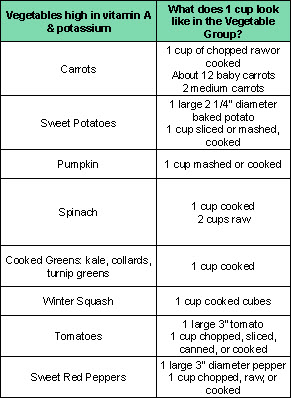
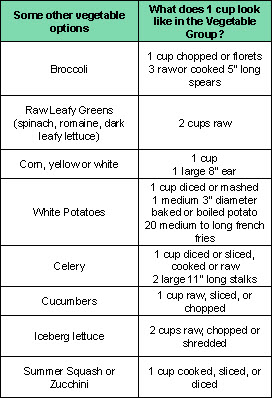
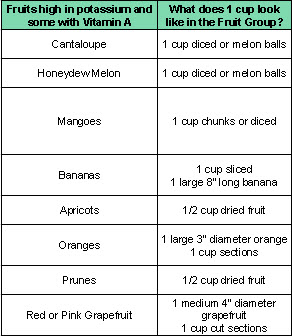
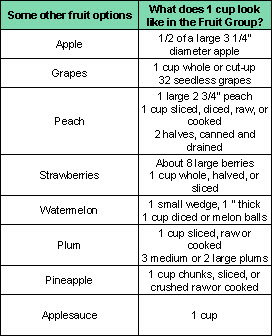
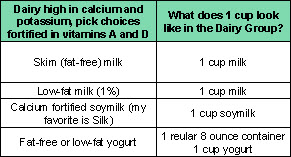
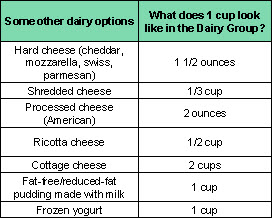
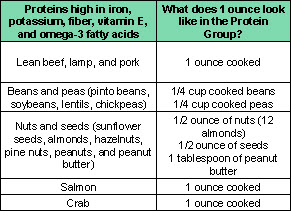
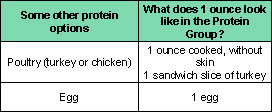
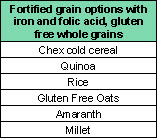
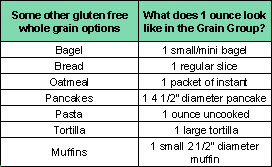
Elise
October 19, 2015 at 5:04 am (9 years ago)Thank you for posting all of this! I have Celiac Disease and am still in my first trimester. I feel hungry all the time and really exhausted, which I’m sure is from not eating enough of the right foods.
Lindsay
October 29, 2015 at 5:47 pm (9 years ago)You’re very welcome! Probably 1/2 of your exhaustion is just being pregnant but surely the other half could be food related. It is very tough to just feel full but don’t hesitate to indulge in a bunch of the carbs and some fun foods too, actually with the holidays coming indulge a lot in some gluten free cookies and pies! Best wishes for a healthy pregnancy!